Canon EF 100-400 mm f/4.5-5.6L IS II USM
4. Image resolution
Now let’s check how the tested instrument compares here. Its performance in the frame centre at 100, 200, 300 and 400 mm shows the graph below.
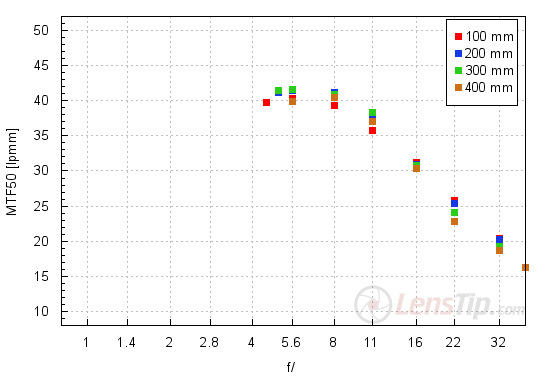
Please Support UsIf you enjoy our reviews and articles, and you want us to continue our work please, support our website by donating through PayPal. The funds are going to be used for paying our editorial team, renting servers, and equipping our testing studio; only that way we will be able to continue providing you interesting content for free. |
- - - - - - - - - - - - - - - - - - - - - - - - - - - - - - - - - - - - - - - - - - - - - - - -
The even level of performance at all focal lengths is a feature that sticks out at once – that and very high results as well. Already at the maximum relative aperture the lens’s MTFs keep near 40 lpmm no matter what focal length you employ; on slight stopping down they can reach 41-42 lpmm. The older model was tested by us on the Canon 20D and that camera provides results by 1-2 lpmm lower than the MTFs from the 5D MkIII. Still even if you add those 1-2 lpmm to the results of the older lens it is not able to beat the new one. The biggest difference can be observed at 400 mm; that focal length in the older model distinctly lagged behind the shorter end; in the new lens that effect is practically invisible.
When you compare the Canon 100–400L II to the Sigma S 150-600 mm f/5-6.3 DG OS HSM, the latter fares better in the 150-300 mm focal range (as the Sigma’s results could go higher than 44 lpmm). Still already at 400 mm the Canon prevails.
Let’s check the performance on the edge of the APS-C sensor- the appropriate graph is shown below.
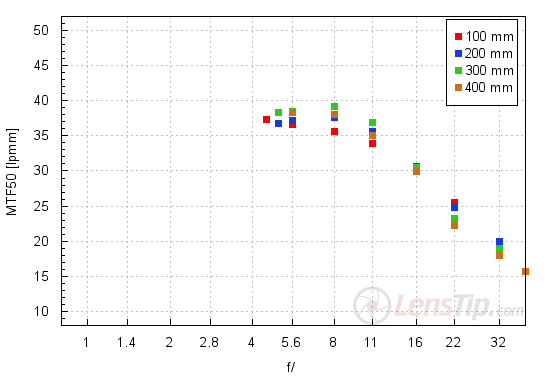
The differences between particular focal lengths are not big but it’s easier to notice them - the shortest focal length is the weakest and the 300 mm fares the best. Mind you in both cases there are no reasons to complain. Already at the maximum relative aperture the lens is able to get very good results, around 36-38 lpmm; on stopping down the lens is able to approach 40 lpmm.
It is obvious the new Canon has a distinct advantage over its predecessor and the Sigma S 150-600 mm – mind you at all focal lengths.
Now let’s check the edge of full frame.
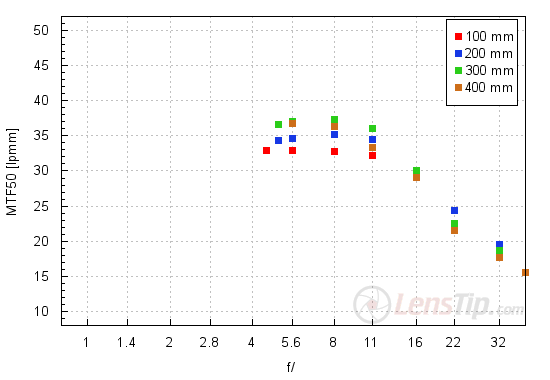
Once again the tested lens deserves to be praised. The 100 mm focal length is the worst but even there, at the maximum relative aperture, the MTFs noticeably exceed the decency level. There is really nothing to carp about!
Traditionally at the end of this chapter we show crops taken from photos of our resolution testing chart saved as JPEG files.
| Canon 5D MkIII, JPEG, 100 mm, f/4.5 |
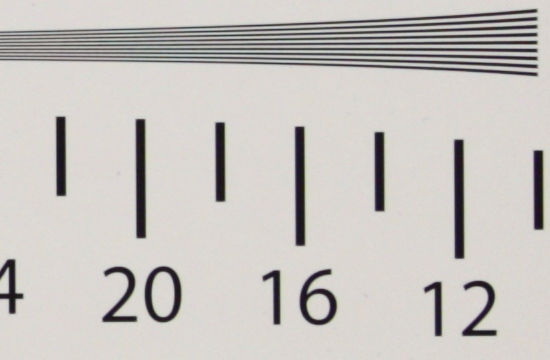 |
| Canon 5D MkIII, JPEG, 300 mm, f/5.6 |
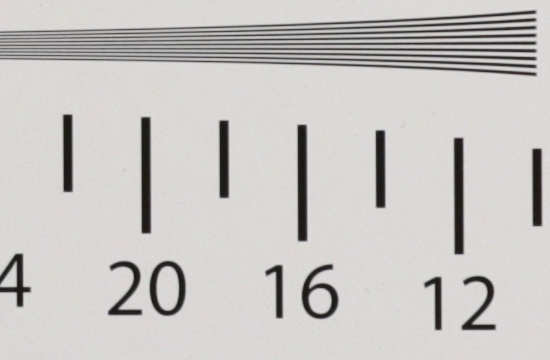 |






